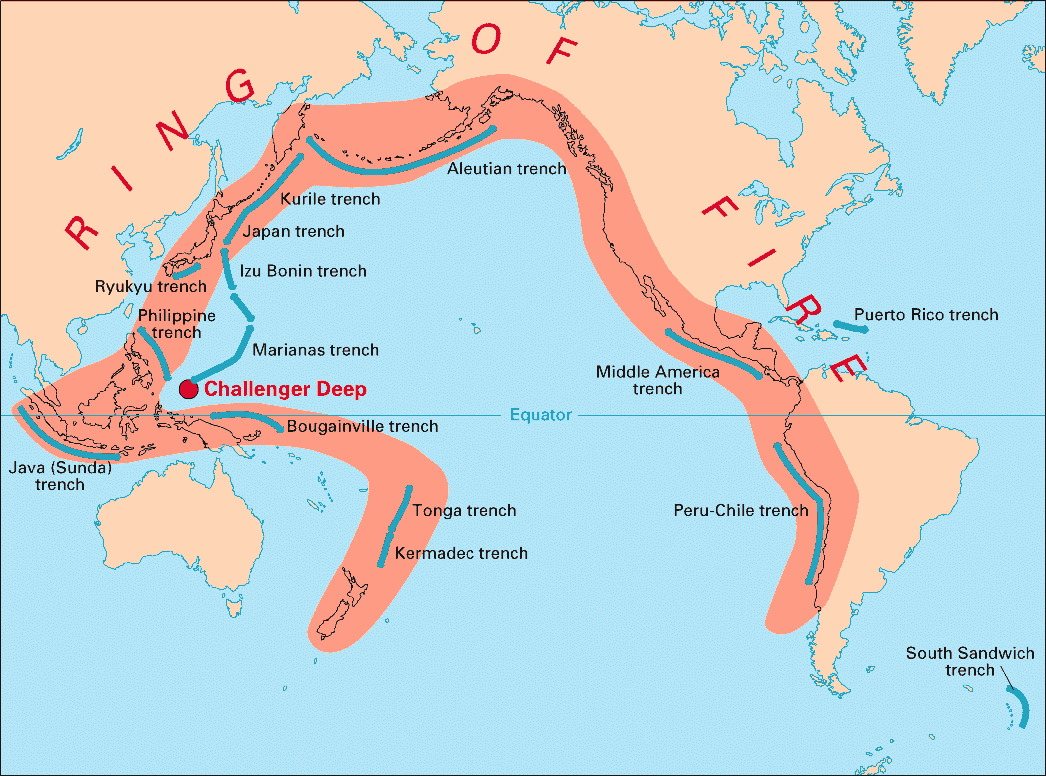Awesome Plate Tectonics
Welcome to Awesome Plate Tectonics. The ultimate blog about Plate Tectonics. We have amazing videos and games, both fun and educational.
Pangea
definition: a super-continent formed 250 million years ago due to plate movement.
Pangea was formed 250 million years ago. It is called a supercontinent because most of the modern continents were squeezed together by continental drift to form it. Pangea started breaking apart by continental drift 180 million years ago. The continents eventually drifted to their present position. There is evidence of Pangea because fossils of the same animals and plants were found on many of the continents. This could only have happened if the continents were all together at one point so that the animals could walk to the different parts of the continent. Then the continents would drift apart and the animals would still be at the same position. The animals prove Pangea.

Plate Tectonics
definition: a theory explaining how the plates move
The earths lithosphere is split into sections called plates. Plate tectonics is the theory that these plates are in constant slow motion. These plates move 1 cm per year. The plates are floating on top of the asthenosphere. The movement of the plates are caused by the rising convection current in the asthenosphere. When the plates are in motion, it can cause earthquakes. Plate tectonics can also create mountains, volcanoes, mid-ocean ridges, and deep ocean trenches.
The earths lithosphere is split into sections called plates. Plate tectonics is the theory that these plates are in constant slow motion. These plates move 1 cm per year. The plates are floating on top of the asthenosphere. The movement of the plates are caused by the rising convection current in the asthenosphere. When the plates are in motion, it can cause earthquakes. Plate tectonics can also create mountains, volcanoes, mid-ocean ridges, and deep ocean trenches.
Convergent Boundary
definition: a place where two plates come together or converge
A convergent boundary is where two plate come together or converge hence the name convergent boundary. The plates will collide when they converge. The denser plate will go underneath the less dense plate when the two plates collide. This will form a hill or mountain.
A convergent boundary is where two plate come together or converge hence the name convergent boundary. The plates will collide when they converge. The denser plate will go underneath the less dense plate when the two plates collide. This will form a hill or mountain.
Divergent Boundary
definition: a place where the plates move apart or diverge
The divergent boundary usually occurs in a mid- ocean ridge. When a mid oceam ridge forms, two plates separate forming a deep valley called a rift valley.
The divergent boundary usually occurs in a mid- ocean ridge. When a mid oceam ridge forms, two plates separate forming a deep valley called a rift valley.
Ring of Fire
definition: an area surrounding the Pacific Ocean with more volcanic activity and earthquakes than other areas of the world
The Pacific Ring of Fire is a huge arc around the pacific ocean constructed by volcanoes. The Ring of fire consists of 75% of the world's active and dormant volcanoes. In the area of the Ring of fire, many earthquakes happen.
The Pacific Ring of Fire is a huge arc around the pacific ocean constructed by volcanoes. The Ring of fire consists of 75% of the world's active and dormant volcanoes. In the area of the Ring of fire, many earthquakes happen.
Mid Ocean Ridge
definition: long chains of undersea mountains
The Mid Ocean Ridge goes through all the oceans of the world. Movement at the earths crust begins at the Mid Ocean Ridge. The ocean floor moves carying the continents with it. In the mid ocean ridge, molten material rises forming new land.
The Mid Ocean Ridge goes through all the oceans of the world. Movement at the earths crust begins at the Mid Ocean Ridge. The ocean floor moves carying the continents with it. In the mid ocean ridge, molten material rises forming new land.
The San Andreas fault
A fault is the border between to plates. One example of a fault in California is the San Andreas Fault. It is the boarder of the North American and Pacific plates. The San Andreas Fault is 800 miles long and 10 miles deep. There is more seismic activity along the faults that can cause huge earthquakes, such as the 1906 San Francisco Earthquake.

Faults of California
The Layers of the Earth
There is four layers of crust, mantle, outer core, inner core. The first the crust is the thinest layer which is 4-7 miles deep. The crust is what we, humans, live on. Under is the mantle wich is 1800 miles thick and is made up of hot rock. The third is the outer core is 1400 miles thick. Last is the core which is 800 miles deep.

Layers of the Earth
Tuesday, April 21, 2009
Subscribe to:
Comments (Atom)


